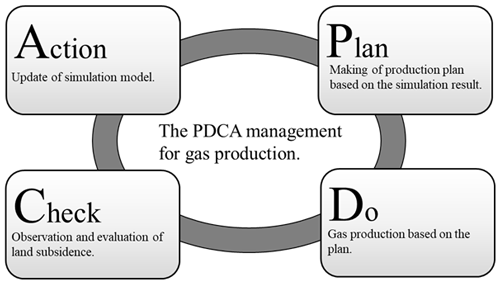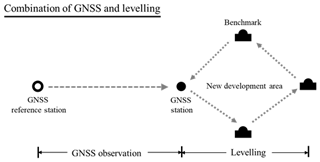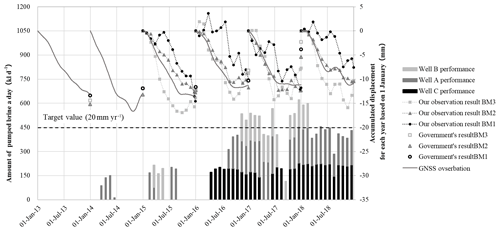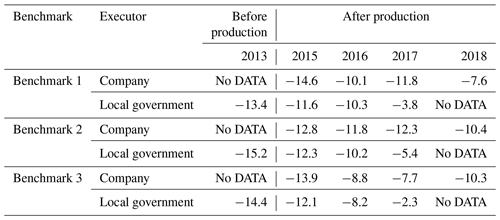the Creative Commons Attribution 4.0 License.
the Creative Commons Attribution 4.0 License.
PDCA method for management of land subsidence
Yoshiyuki Muramoto
Susumu Hayatsu
Michiharu Hiyama
Daisuke Murai
Shoji Kunisue
In Chiba prefecture in Japan, it has been reported land subsidence for many decades. One of the causes of land subsidence is considered gas production. To reduce and control land subsidence, we applied PDCA method in a certain new development area. As a result, we could maintain successfully the land subsidence less than the target value, 20 mm yr−1 at the present moment.
- Article
(389 KB) - Full-text XML
- BibTeX
- EndNote
The Southern Kanto gas field, the largest field of natural gas dissolved in water in Japan, is located primarily under the Chiba prefecture (Fig. 1). In this field, eight companies produce 460 million m3 yr−1 of natural gas (Japan Natural Gas Association, 2019). On the other hand, there are some environmental issues such as land subsidence. Generally speaking, land subsidence results from various causes such as natural compaction, tectonic movement and ground water withdrawal for agricultural or industrial use.
The gas production is also considered one of the causes the land subsidence. To produce natural gas dissolved in water, it is necessary to produce formation water too. As a result, the formation pressure is reduced and land surface subsides. There are some causes in land subsidence other than natural gas and formation water production, but as natural gas production company's responsibility, we are making some efforts to reduce the land subsidence.
As a part of our efforts, we have been conducting land subsidence PDCA management in a certain new development area. The land subsidence in this area is thought to be affected by ground water withdrawal for agricultural use and tectonic movement as well as natural gas production. Because the study area is rural, the pump discharge rate is not clear but the ground water is withdrawn for agricultural use to some extent. In addition, Chiba prefecture containing the study area is located near the plate boundary between the Pacific Plate and the Philippine Sea Plate. In this area, the earthquakes often occur.
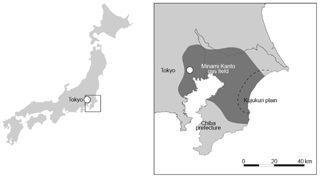
Figure 1Southern Kanto gas field (Kunisue and Kokubo, 2010). Minami Kanto gas field in this figure means Southern Kanto gas field.
In this paper, we introduce land subsidence PDCA management. The purpose of this management is to control land subsidence less than the target value, 20 mm yr−1.
PDCA consists of four steps (Plan, Do, Check, Act). It is based on the “Shewhart cycle” (Moen and Norman, 2006; Chakraborty, 2016). PDCA is a continuous feedback loop to identify and change process elements to reduce variation (Gupta, 2006). In general, PDCA aims at the control and continuous improvement of processes and products.
As a measure for controlling land subsidence, we apply PDCA method in a certain new development area and repeat it every year (Fig. 2).
2.1 Plan
We make production plan based on the result of geomechanical reservoir simulation. The simulator is called “JARAS/3D” which was developed as a result of joint study between Japan Oil, Gas and Metals National Corporation (formerly Japan National Oil Corporation), and the eight gas production companies in Southern Kanto gas field. This simulator is adjusted for Southern Kanto gas field and it can evaluate the amounts of land subsidence associated with natural gas production.
2.2 Do
We produce natural gas and formation water based on the production plan. However, the land subsidence is occurred by not only the effect of natural gas and formation water production but also natural compaction, tectonic movement, etc. Sometimes unexpected large subsidence is occurred by those effect. Against such situation, we set a criterion of land subsidence for the each well as a precaution. When the land subsidence is larger than this criterion, we stop the natural gas and formation water production from the corresponding well in order to avoid further land subsidence. The measurement method of land subsidence is mentioned in Sect. 2.3.
2.3 Check
We observe the land subsidence and compare it with the criterion every month (Fig. 3). To observe land subsidence, measurement of the relative height from the reference point which is free from the effect of the natural gas and formation water production is necessary. Such point is far from natural gas and formation water production area. Therefore, the levelling requires a huge time to obtain the observation result. On the other hand, GNSS (Global Navigation Satellite System) can obtain it continuously and rapidly. To observe land subsidence at the target points rapidly, we apply the combination of GNSS measurement and levelling.
First, we established GNSS station in the target area, and measure the relative height of the GNSS station from the reference GNSS station which locates out of the effect of natural gas and formation water production. Next, the height of benchmarks around the GNSS station are measured by levelling. Finally, the height of target benchmarks are obtained by combining the GNSS measurement and levelling result (Fig. 4).
To get the baseline data, the GNSS measurement has been conducted before the natural gas and formation water production start.
Furthermore, we compared the land subsidence results with those by the local government.
2.4 Act
We observe not only the land subsidence but also the water level which reflect the formation pressure. We update the simulation model based on these observation data every year if necessary. Commonly permeability and firmness are modified to reproduce the water level and land subsidence respectively. Then we use the updated simulation model on the Plan in the next PDCA.
We applied PDCA method in a certain new development area to reduce and control land subsidence. Based on a result of land subsidence, we changed the production plan if necessary. When the land subsidence became larger than the criterion, we stopped the production. After that, when it became smaller than the criterion, we restarted the production.
As a result of the PDCA management, we could maintain successfully the land subsidence less than the target value, 20 mm yr−1 at the present moment. In addition, the observation results conducted by the local government shows less than 20 mm yr−1 (Fig. 5).
We could obtain the land subsidence observation results close to Government's result in 2015 and 2016. However, the Government's result was small in 2017. In 2018, the Government's result has not disclosed yet.
Comparing the land subsidence result before and after the start of natural gas and formation water production, it became smaller. The land subsidence in benchmark 1 (BM1) was −13.4 mm yr−1 in 2013 before the natural gas and formation water production, but it was −11.6 and −10.3 mm yr−1 in 2015 and 2016 after the natural gas and formation water production. Similarly, Benchmark 2 (BM2) was −15.2 mm yr−1 in 2013, while −12.3 mm yr−1 in 2015 and −10.2 mm yr−1 in 2016. Benchmark 3 (BM3) was −14.4 mm yr−1 in 2013, while −12.1 mm yr−1 in 2015 and −8.2 mm yr−1 in 2016 (Table 1). The reason is not clear but it could be the effect of factors other than natural gas and formation water production.
The results of our work show us possibility to control land subsidence. By repeating this method every year, we will improve the management method. On the other hand, they also show us some issues as mentioned in Sect. 3. To improve this method, we will study on these problems in the future.
For more information about the used data, please contact the corresponding author Yoshiyuki Muramoto (y.muramoto@k-and-o-energy.co.jp).
YM, SH, DM and SK conceived the idea of the method. YM,SH,MH collected the data. YM, SH, DM and SK analysed the data. YM wrote the manuscript.
The authors declare that they have no conflict of interest.
This article is part of the special issue “TISOLS: the Tenth International Symposium On Land Subsidence – living with subsidence”. It is a result of the Tenth International Symposium on Land Subsidence, Delft, the Netherlands, 17–21 May 2021.
Chakraborty, A.: Imprtance of PDCA Cycle for SMEs, SSRG-IJME, 3, 30–34, 2016.
Gupta, P.: Beyond PDCA A New Process Management Model, Qual. Prog., 39, 45–52, 2006.
Japan Natural Gas Association: available at: http://www.tengas.gr.jp/keiyo_outline.html, last access: 5 August 2019.
Kunisue, S. and Kokubo, T.: In situ formation compaction monitoring in deep reservoirs by using optical fibres, Eighth International Symposium On Land Subsidence, Juriquilla, Queretaro, México, 17–22 October, Vol. 339, 368–370, 2010.
Moen, P. and Norman, C.: Evolution of the PDCA Cycle, 2006.






